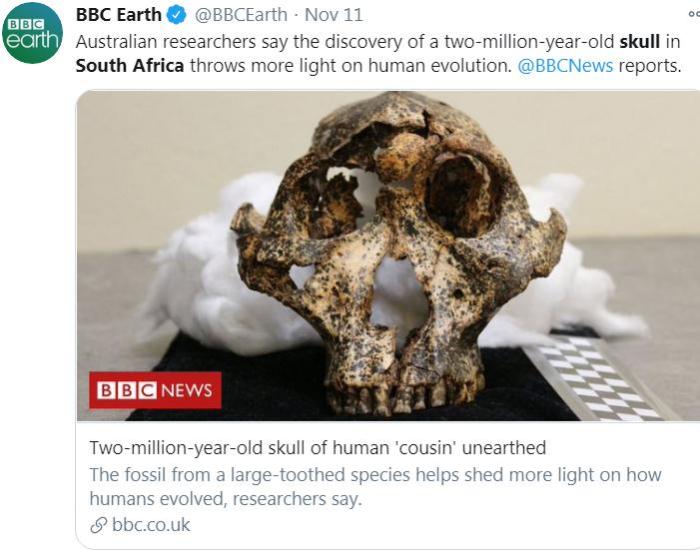November 13, According to the British Broadcasting Corporation (BBC) Chinese website, Australian researchers said that a 2 million-year-old skull discovered in South Africa provides more information for human evolution.
According to reports, this skull came from the Robuspian, which is a close relative of Homo erectus, and Homo erectus is considered the direct ancestor of modern humans. These two species lived in the same period, but the Luobai people died out earlier.
The research team said the new findings are exciting. “Most of the fossils are scattered teeth, so it is very rare and very lucky to find such fossils,” said Dr. Angeline Leece.
In 2018, researchers from the University of Melbourne discovered this skull fragment at the Drimolen archaeological site in northern Johannesburg, South Africa. In 2015, a few meters away from the site, a child’s Homo erectus skull was found.

Then, archaeologists have pieced together and analyzed the fossils in the past few years. Their research results were published in the journal Nature Ecology and Evolution on November 10, 2020.
Researcher Jesse Martin said that dealing with fossil fragments is like dealing with “wet cardboard,” and said he used a plastic straw to suck up the last bit of dirt.
According to reports, three early humans allegedly lived in South Africa at the same time and competed with each other. Martin said that in this regard, the discovery of the skull is a rare example of “microevolution” within the human lineage.
Robusts have large teeth and small brains, which are different from the small brain teeth of Homo erectus. It is believed that the former mainly eats hard plants such as tubers and bark. Liss said that over time, it is likely that the Robust Pangs will evolve to be able to emit and withstand greater force when biting and chewing food. Scientists claim that climate change has made the environment more humid, which may reduce the food supply for the people of Robust.
At the same time, Homo erectus with smaller teeth is more likely to eat both plants and meat. “These two completely different species represent different evolutionary practices,” Liss said. “Although we are the pedigree that ultimately’wins’, the fossil record of 2 million years ago shows that on land, Robust People are much more common than Homo erectus.”



